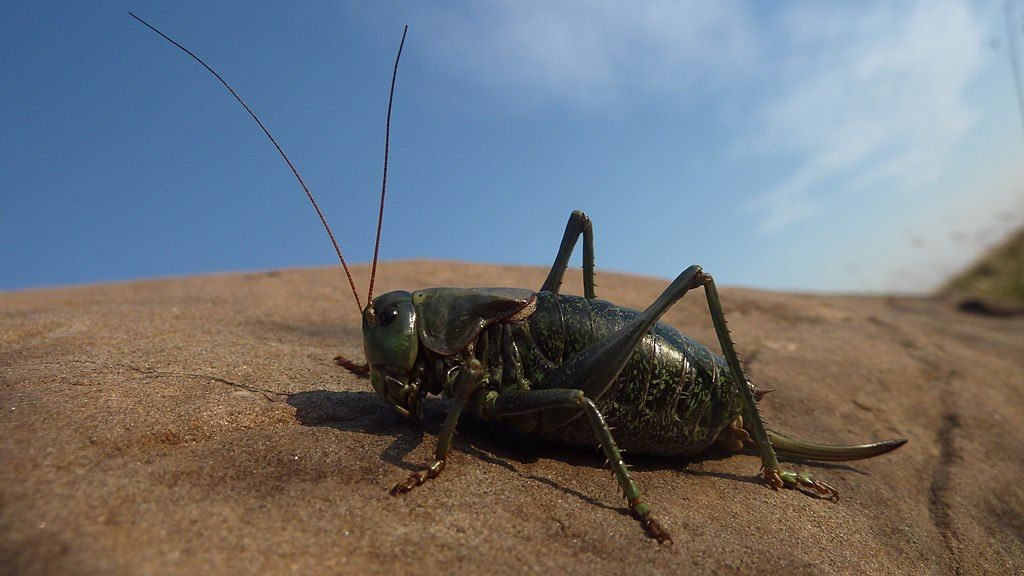
10 September 2019
In the American West there’s a 3-inch long katydid called a Mormon cricket (Anabrus simplex) that cannot fly but it sure can walk.
We hardly notice Mormon crickets until millions swarm and march across the landscape, advancing more than a mile a day like a Biblical plague of locusts. Naturally scientists wondered what makes them do it.

A 2006 study discovered that the swarms are driven by hunger and fear. The crickets are hungry for protein and salt so they start to migrate, but the bugs are cannibals and will eat each other if they can. Those at the back of the pack pursue the front line to catch and eat them. Fear forces the crickets to keep track of their neighbors and constantly on the move.
Despite the danger from behind, individuals sometimes double back into the crowd. If enough of them do it the whole swarm changes direction. How does this happen? What signals such a change?
In 2011, a study of locust swarming behavior at the Max Planck Institute worked on a computer model to predict the bugs’ behavior. Nothing adequately mirrored the swarms’ movements until researchers applied a social networking model that predicts the movement of human opinion on Facebook and Twitter. Somehow the locusts walking in one direction convince others to walk in the same direction. As researcher Gerd Zschaler remarked,
We concluded that the mechanism through which locusts agree on a direction to move together (sometimes with devastating consequences, such as locust plagues) is the same we sometimes use to decide where to live or where to go out: we let ourselves be convinced by those in our social network, often by those going in the opposite direction.
We don’t necessarily pay more attention to those doing the same as us, but many times [we pay more attention] to those doing something different.
— Swarms of locusts use social networking to communicate, Science Daily
Our crowd-based opinions move like swarms of locusts.
Swarms of locusts act like Facebook.
p.s. If you’ve never seen a swarm of Mormon crickets click here for a National Geographic video. Read more about locust swarming behavior in Science Daily.
(photos from Wikimedia Commons, click on the captions to see the originals)
I still don’t understand the relationship between grasshopper movements and human behavior on social media
Siti Nur Amalia, it’s not a direct relationship but a similarity. According to the Science Daily article, the same “networking” models that predict how human opinion moves on social media also predict how locusts move in a swarm. So (1) locust swarms use the same networking/influence techniques that humans engage in on social media. Conversely, (2) watching a locust swarm is the the same as watching human opinions changing on social media. … I hope this helps.